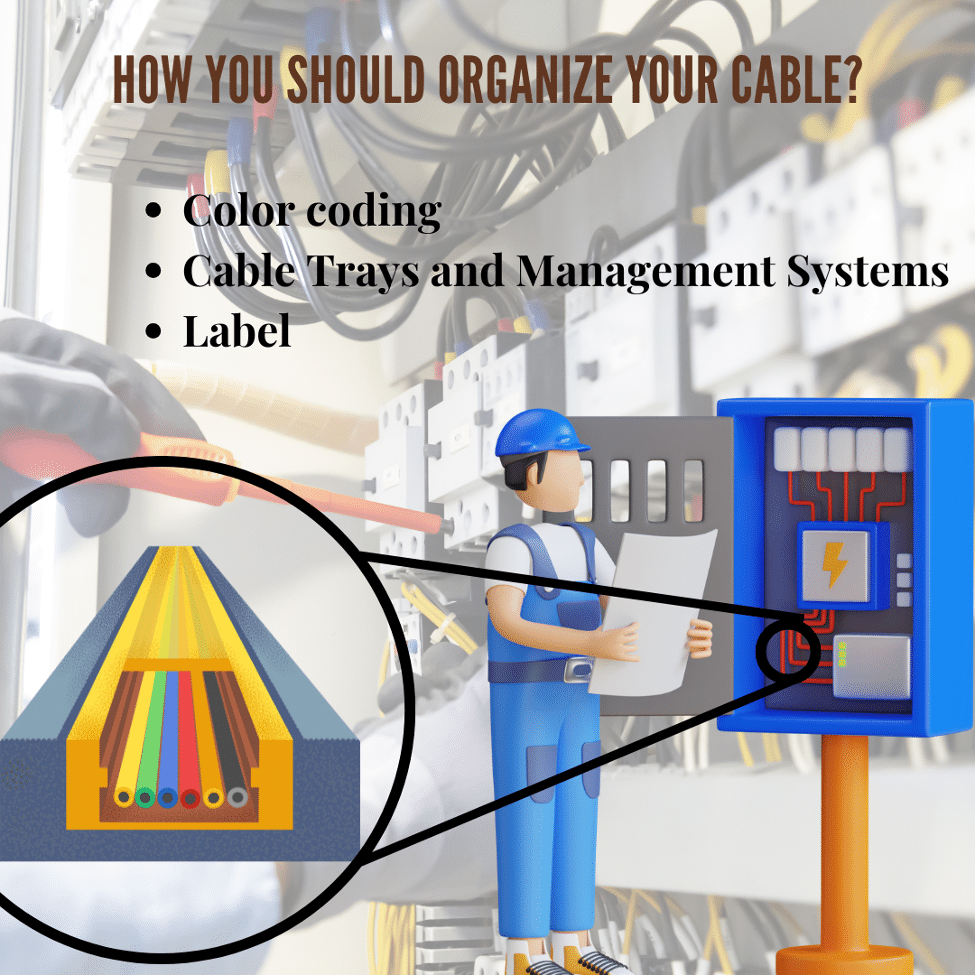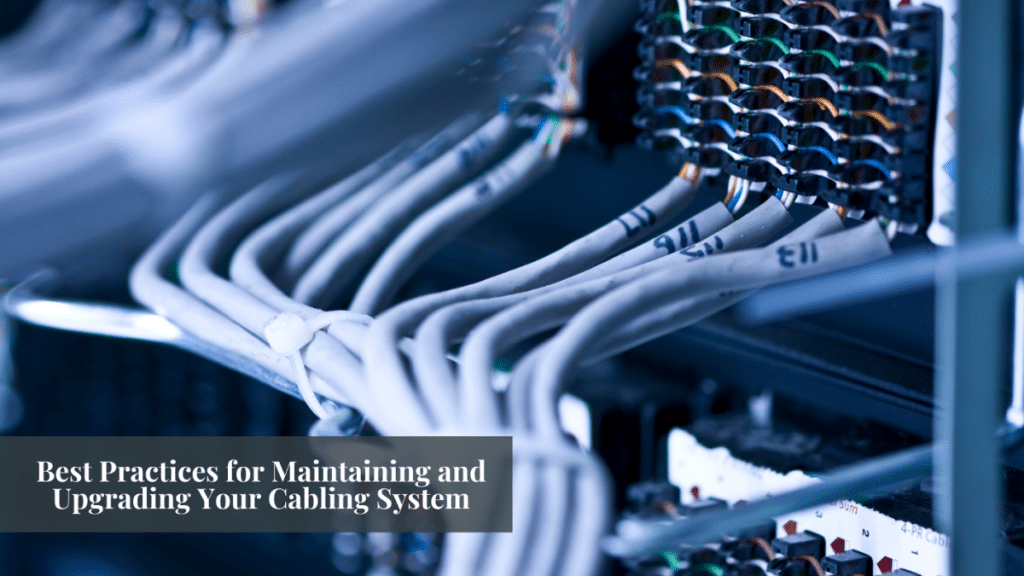Reliable cabling system is the very spine of an organization’s communications and data infrastructure. Proper maintenance and upgrade of cabling facilitate the smooth transfer of data and ensure high connectivity and stability within the network.
Office buildings, data centers, and factories must keep their cabling updated to meet technological demands. This article outlines the best practices for maintaining and upgrading your cabling system for optimal performance.
Conduct Frequent Checks
Routine checks can be conducted to detect potential problems before they turn into big problems. The cables tend to degrade gradually due to various environmental conditions such as thermal variations, dust or moisture, and physical damage.
The cables can be detected as being worn out or damaged or have fraying or corroded due to regular visual checks. Moreover, evaluating connections at ports and jacks is also a prudent choice because loose or bad connections may cause reduced performance or even a complete loss of the network.
In Coral Gables, numerous businesses continue to rise, and the spine of each business is the communication through different mediums, however, one of the most widely used is through the use of innovations in social media and different software which allows interoperability.
Cable testers and network analyzers measure the signal strength and quickly detect data transmission faults. A structured cabling coral gables allows a strong signal for the team for a seamless integration of technology into the working force. This allows the organization to meet the quality standards they need to serve their customers and the needs of employees.
Organize and Label Your Cabling
Proper organization and labeling of cables are very important to efficient network management. When the cables are organized and labeled, troubleshooting and maintenance will be easier. Here are some best practices for organizing and labeling your cabling:
- Color Coding: Use different colored cables for specific functions or areas, making it easier to identify them quickly.
- Cable Trays and Management Systems: Cable trays, racks, and cable management solutions should be implemented to avoid tangling and well-organizing the cables.
- Label: Label every cable on each end of a connection, with its purpose, connection points, or the device it supports. This saves more time for maintenance and prevents errors.
In addition to extending the lifespan of your cables by avoiding stressing and unnecessary bending that might strain the cables, it will make your cabling system functional.

Follow Standards and Regulations
An important condition to ensure both safety and efficiency is that industry standards must be met and compliance rules and regulations on cabling systems must be observed.
Different guidelines were established by TIA, and even ISO in terms of the performance of cabling systems, how to install them, and test them after the installation. This standard keeps a more consistent and quality infrastructure for cabling in place.
For example, TIA-568 and ISO/IEC 11801 are key standards for structured cabling. They cover materials, installation, and maintenance. Following these standards ensures your cabling meets today’s and future tech needs. It also reduces the risk of network failures.
Scalability and Future Growth Planning
Anticipate your organization’s needs for bandwidth and connectivity as part of the upgrade to the cabling system. This way, you save on time and cost by minimizing the need for upgrades and upgrades at short intervals. Use more high-grade cables, such as Cat6 or Cat6a, because they can handle high data transfer rates and thus future-proof your network.
The other great selection in scalability is fiber optic cables, which find a way to deal with high data rates and are less susceptible to interference. Also, with modular cabling designs, connections can easily be added or rearranged, and it is easy to get used to changes in hardware or layouts.
Quality Cables and Components
These types of cables and components could be costly shortly, but they usually ensure a better performance in that area as well as lasting longer than cheaper cables do.
Cheap cables tend to attenuate the signal over large distances and can even get fragile, and breakable easily, especially if there’s rigorous usage. Buying the cables with appropriate shielding and insulation; will assist in providing efficient high-speed data transfer.
One may opt for fiber optic cables or shielded twisted-pair cables for data centers. High-quality connectors and patch panels that also avoid losing data along the way and minimize interference would make up the rest of the hardware equipment.
Maintain Up-to-date Cable Maps and Documentation
Documentation is always up-to-date to make rapid troubleshooting and maintenance possible. A proper cable map should include the types of cables, cable paths, lengths, and connection points.
In a cabling system with many technicians or departments, detailed documentation is crucial. It ensures everyone understands the system.
Cable maps simplify adding or upgrading cables. They provide quick access to existing connections and pathways. Consider using network mapping software. It allows you to create, store, and update cabling documentation digitally.
Test Network and Cables
Regular testing ensures your cabling system operates at peak performance. Among the results of testing, there are signal loss, noise, interference, and bandwidth limitations to be identified. Here are some types of tests available:
- Continuity testing: This test ascertains that cables have a correct connection from end to end and detects a break or poor connection.
- Bandwidth testing: Checks whether the cabling can support the required data transfer rate.
- Signal Quality Testing: It checks the strength of the signal and determines how much interference or noise would affect performance.
Periodic usage of these tests will determine whether your network is performing at the standards that are set and should be able to support necessary data loads.
Proper Cable Routing and Avoid Overloading
Too many cables cause overloading in conduits or trays leading to overheating and, worse still, signal degradation and may develop into a fire hazard.
Suitable cable routing and spacing will prevent overheating and will make individual cables easy to access if maintenance is necessary. Don’t allow power cables close to the data cables since electrical interference from the power cables affects the data for transmission.
You should also route the cables away from EMI sources, such as electrical panels, fluorescent lighting, or heavy machinery. It prevents unstable data transmission due to power and data cables staying in the same bundle and therefore increases the opportunity for signal degradation.
Upgrade to Fiber Optic When Possible
When an organization requires high data rates over a long-distance line, it can act like a game-changer with the upgrading of these cable lines to fiber.
For instance, fiber optical cables will offer better performance from signal degradation as the line progresses over long distances rather than copper. Additionally, signals in these cables suffer lesser interference due to electrical devices surrounding them.
Upgrading to fiber optic will depend on factors such as the type of fiber-optic cable, whether it is single-mode or multi-mode, the installation environment, and the level of bandwidth required. Fiber optic cabling greatly enhances network performance and future-proofs your infrastructure, ensuring it is a smart long-term investment.
Secure Your Cabling
Probably the most commonly overlooked security issue in cabling systems is the area of data protection. Physical access to high-security areas should be restricted, as should cables by being enclosed within secure conduits or racks. Structured cabling can support network area segmentation about security.
Guard data cables and monitor network entry points for intrusion. Tests and reviews often identify vulnerabilities and secure cabling safeguards against data theft or intrusion into your infrastructure.
Conclusion
Upgrading and maintaining your cabling system is very important for any organization that relies on data and communication. Here are some best practices to keep your cabling system running well: regularly check your cables, use high-quality materials, stay organized, and plan for future growth.
When your cabling network is properly taken care of, it helps you send data quickly, reduces interruptions, and prepares your system for new technology in the future.
It’s also a good idea to work with experts, keep detailed records, and follow industry rules to create a cabling system that is efficient, flexible, and secure, ensuring it serves your organization well for many years.
FAQs
1. How often should I inspect my cabling system?
You should check up on your cabling system annually or yearly, though, in more intensive use, there might be environmental influence, respectively.
2. Which types of cables will have a greater performance in data transfer using high speed?
In transferring high speed, optical fibers are the best-utilized cables since they can provide much more bandwidth and greater distance transmission with no signal loss.
3. Why is cable organization important?
Cable organization is vital because it makes troubleshooting easier, improves airflow, and eliminates the possibility of physical damage or interference.
